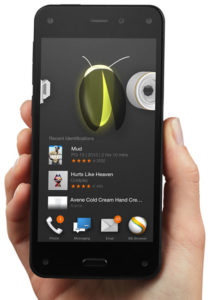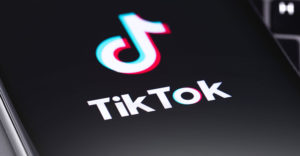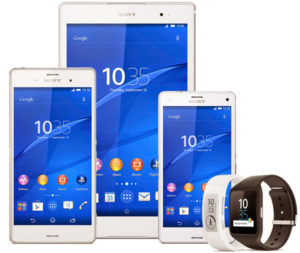
Verizon has filed a response to the lawsuit AT&T brought against its snarky “We’ve Got a Map for That” advertising campaign.
Unlike typical legal briefs, the carrier’s filing is replete with witty rejoinders and sarcasm, echoing the ridiculing tone of the ads at the center of the dispute.
More than likely, AT&T did not forsee this type of response, Scott Testa, business professor at Cabrini College, told the E-Commerce Times.
“Between Verizon’s lawyers and its PR people, I would say the company is working this issue pretty well,” he said.
In many companies, lawyers and marketing departments have opposing goals, Testa continued, with the lawyers thinking defense and marketers thinking offense.
“Some corporate cultures are headed by marketers, some by lawyers. In this situation, it seems as though they are working hand in hand,” he remarked.
Verizon is certainly aware of the enormous interest this issue has attracted, Jeffrey Nelson, executive director of Verizon Wireless’ Corporate Communications, told the E-Commerce Times.
“In general, over the past several years, we have taken a hard look at our legal documents all across the board,” Nelson said, “trying to make sure that real people can understand them. This is true for our filings with the FCC, filings with courts, etc.”
The AT&T ads and the subsequent lawsuit, in particular, have generated voluminous and passionate feedback from bloggers and commenters, he noted. “So, yes, we did write the brief knowing that people would be reading it and wanting to understand what our position is.”
From the Beginning
The advertising skirmish between AT&T and Verizon began at the start of the month, when AT&T filed a complaint against Verizon in federal court seeking to enjoin it from running a commercial showing maps of the two carriers’ 3G wireless network coverage.
AT&T did not claim that the map of its coverage was inaccurate but argued that it was misleading to consumers.
“In essence, we believe the [Verizon] ads mislead consumers into believing that AT&T doesn’t offer ANY wireless service in the vast majority of the country,” AT&T says in its complaint.
However, the ad does state that the maps compare 3G network coverage.
Island of Misfit Toys
Verizon made modest adjustments to its ad, inserting a disclaimer stating that voice and data services were available outside of the 3G coverage areas. It also took the opportunity to launch a video ad, dubbed “the Island of Misfit Toys,” tweaking AT&T again for its spotty 3G coverage — and showing the controversial maps at the end.
AT&T went back to court, requesting a restraining order against both ads. Once again, it argued that Verizon was misleading consumers into believing AT&T had no coverage by highlighting the differences between the carriers’ 3G networks.
In order to make the company’s case, AT&T’s attorneys had to refer to the offending ad in the complaint, and their staid description of a whimsical video based on an endearing Christmas special provided an opening for additional ridicule.
“The ‘Island of Misfit Toys’ television advertisement is a parody of the ‘Rudolph the Red Nose Reindeer’ television special that depicts an island to which Rudolph travels after escaping an attack from the Abominable Snow Monster,” AT&T notes in its filing.
“The advertisement begins with outdated, discarded toys expressing surprise at the arrival of an Apple iPhone. The red Charlie-in-the-Box says ‘Hey! Check out the new guy!’ The spotted elephant, in a surprised manner, asks the iPhone ‘What are you doing here? You can download apps and browse the web!’ and a Dolly for Sue asserts that ‘Yeah. People will love you [the iPhone],'” reads the complaint.
“The image of the sad and wilting iPhone on an island of misfit toys falsely communicates that the iPhone is a broken device because it cannot browse the web or download applications when outside of AT&T’s depicted coverage area,” concludes the argument.
Verizon’s Comeback
Verizon’s response in court was to the point: “AT&T did not file this lawsuit because Verizon’s ‘There’s A Map For That’ advertisements are untrue,” it said. “AT&T sued because Verizon’s ads are true and the truth hurts.”
AT&T “failed to invest in the necessary infrastructure to expand its 3G coverage to support its growth in smartphone business and the usefulness of its service to smartphone users has suffered accordingly,” Verizon said. “AT&T may not like the message that the ads send, but this Court should reject its efforts to silence the messenger.”
The Case for AT&T
There is a case to be made for AT&T, Peter Morrissey, an associate professor of crisis communications at Boston University, told the E-Commerce Times.
“Verizon appears to be trying to distort AT&T’s coverage as a way to blunt overwhelming and enthusiastic competitive advantage brought on by the popularity of AT&T’s partnership with Apple’s iPhone,” he said.
This is a typical Verizon tactic, according to Morrissey. “If you do not have the tool — the iPhone — then you attack what the tool needs to be successful, the network.”
It appears that AT&T is losing the perception war, Andy Abramson, CEO of Comunicano, told the E-Commerce Times.
“What is interesting is that I have learned more about Verizon’s 3G network from this legal back and forth than I did when the ads were running before AT&T started its suit.”
The fact that the dispute coincided with the release of Verizon’s Droid can only have worked in Verizon’s favor, he added.
Two Can Play
If Verizon is guilty of using its legal brief as a PR platform, then AT&T is as well. After claiming that Verizon’s ads are misleading, AT&T’s brief goes on to make its case for smartphone superiority.
“Verizon’s misleading advertising tactics appear to be a response to AT&T’s strong leadership in smartphones,” AT&T says. “We have twice the number of smartphone customers… and we’ve beaten them two quarters in a row on net post-paid subscribers. We also had lower churn — a sign that customers are quite happy with the service they receive.”




























































































> "If you do not have the tool — the iPhone — then you attack what the tool needs to be successful, the network."
I was thinking it was Verizon’s way of saying: We can’t really say anything too bad about the iPhone… and we definitely want it on our network… but AT&T is just awful. (And it is.)